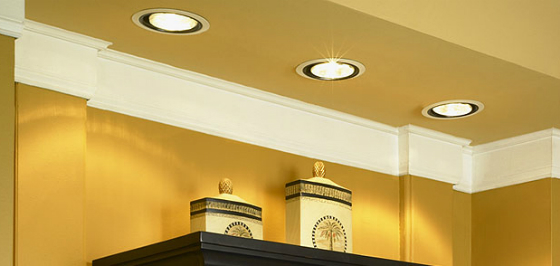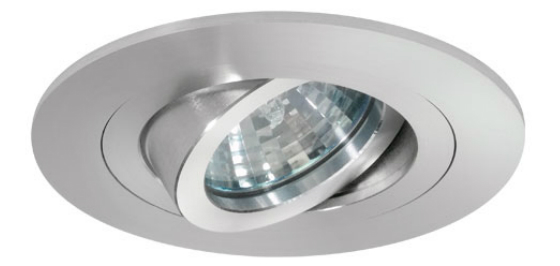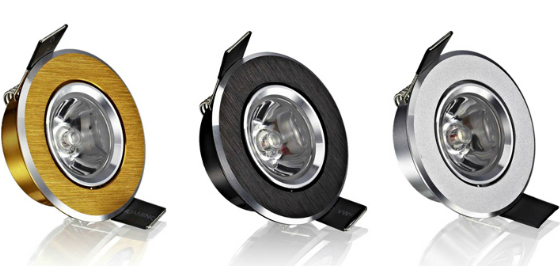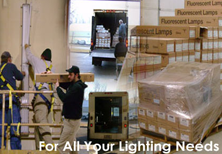LED Recessed Can Lighting

Recessed or can lights are installed flush with the ceiling and are the ideal choice when you’re looking for understated or low-profile lighting. They work well in both commercial and residential applications and can be used as accent lights or for whole room illumination. In homes, they are commonly seen in kitchens, baths, basements, and hallways. In commercial spaces they are often used in all parts of the building.
Types of Recessed Lighting
The main types of recessed lights used today are:
Incandescent
Incandescent bulbs offer a warm glow at an inexpensive price. Although you can use a standard incandescent bulb, specially designed reflector lamps (R Lamps and PAR Lamps) are the traditional choice for down lighting. The major negatives with all incandescents are their inefficiency and high heat output.
HID
Warehouses and other large commercial buildings have historically opted for high intensity discharge lights over incandescents because of the HID’s superior light output. Such powerful light is needed in high-ceilinged areas where there is a great deal of dark space to penetrate through.
The three types of HIDs are:
- Metal halide – Has long life and good color.
- Mercury vapor – Best for outdoors. Light has bluish-green tint.
- High pressure sodium – More efficient than other HIDs. Light has yellowish tint.
CFL
Compact fluorescents are more energy efficient than many other types of lights and are a smart replacement for incandescent bulbs. They offer comparable light quality to incandescents and even come in reflector styles, which make them suitable for recessed lighting.
One thing to keep in mind with CFLs is that they contain hazardous mercury, which means you must dispose of them properly.
LED
LEDs are the newest recessed lighting technology and offer the best features of all other types of bulbs and more. For instance, they have extremely long lives (50,000 hours or more), are appropriate for both indoor and outdoor applications, come in a variety of color temperatures, and are versatile enough to properly illuminate everything from small homes to expansive warehouses.

Although LEDs are currently more pricey than other bulbs, you’ll end up saving money in energy and maintenance costs, which helps you to quickly recoup your ROI. For example, 12, 20, and 25 Watt LEDs replace 75W, R30, and 100W PAR lamps, yet they offer the same level of illumination without the excess energy and heat. That can save hundreds of dollars per fixture over a five year period.
Given the many benefits of LEDs, it makes sense to convert any existing incandescent, HID, or CFL recessed light to an LED setup. Similarly, during new construction projects, installing LED recessed fixtures from the get-go can save significant money in the long term and immediately offer superior lighting. If you decide to go with LED, you have many options…
LED Recessed Lighting Options
When choosing fixtures for recessed lights, you have two primary choices — those labeled as “new construction” and those labeled for retrofits. Still, “new construction” doesn’t necessarily mean the lights can only go in a brand new building, but it does mean you must have full access to the ceiling without anything hindering your contact to the beams. This is because new construction housings are typically installed directly on joist beams or hanger bars. Alternatively, remodel units are lighter weight, are installed directly into the ceiling material and can connect to existing recessed fixture junction boxes. Also, with the new “ez-connectors,” you can install retrofit LED recessed lights without any rewiring.

Other things to look for:
- IC Rated Housings – Use when housing will be in direct contact with the insulation.
- Non-IC Rated Housings – Use when housing will NOT be in direct contact with insulation.
- Suitable for Wet Locations – This is a must when lights are installed in bathrooms, showers, outdoors, and other damp places.
- Air Tight – This feature prevents hot or cold air from leaking into the home through the fixture. A great choice for energy savings.
- Sloped Ceilings – These can lights are specially designed for sloped ceilings.
- Line Voltage – Works directly with a standard 120 volt household current. Good for whole room illumination.
- Low Voltage – Uses only 12v-24v and is energy efficient. Requires a transformer. Ideal for task or accent lighting.
- Multi-tap Commercial Voltage – Uses 227 volt. Preferred in large, commercial buildings that need greater light output and have more powerful electric currents.
- Dimmable – Not all LEDs are dimmable, so look for this feature if it’s important to you.
- Trim – Choosing a trim style is largely a matter of taste, but some have special features, such as absorbing excess light (baffle trim), reflecting light (reflector trim), and moisture resistant (lensed trims).
Ultimately, LED bulbs offer the most features, efficiency, and flexibility for recessed lighting applications. In fact, they are now available in so many colorings (including warm, white) that they easily match or exceed the quality of light from incandescents, fluorescents, and HIDs. If you’re new to LEDs, talk with your lighting specialist or view some samples in person to get an idea of what type of bulb you prefer for your home or commercial space.



No comments yet.